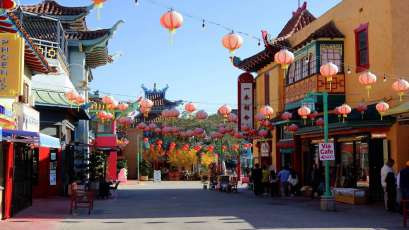
Sai Gon and the Reunification palace
- on Mar 18, 2018 By: Ngoc Tu DINH
Similar to Long Bien Bridge in Hanoi, Reunification Palace (formerly known as Independence Palace) has been bear in mind of many generations of not only Vietnamese but also foreigners. If previously, we have briefly picture out the bustling atmostphere of Sai Gon, in this article Authentik Vietnam will take you back to the glory past of this city through out the view of the Independent palace.

Location
The current address of Reunification Palace is at 135 Nam Ky Khoi Nghia Street, District 1, Ho Chi Minh City - right at one end of Le Duan Street. It borders other 3 streets: Huyen Tran Cong Chua Street in the back, Nguyen Thi Minh Khai Street on the right and Nguyen Du on the left.
History
“Dinh Độc Lập” or “Reunification Palace” is stated as the famous witness which passed through the two fierce wars against the French and American colonists. Designed by the architect Ngo viet Thu, this palace was built on the site of the former Norodom Palace, a landmark in Ho Chi Minh city. Since the affection of political conflict, Vietnam was split into 2 parts – north and south, in which the Independent palace was served as presidential home and work place. Nowadays in most local’s mind, the palace is remembered vividly as a marked end of the war, just like the fall of Berlin Wall, as the North Vietnamese tank crashed its gates on April 30th, 1975.
Its current address is at 135 Nam Ky Khoi Nghia Street, District 1, Ho Chi Minh City - right at one end of Le Duan Street. It borders other 3 streets: Huyen Tran Cong Chua Street in the back, Nguyen Thi Minh Khai Street on the right and Nguyen Du on the left.
Architecture
Reunification Palace’s architecture is a harmonization between traditional ritual and modern architecture, typical of the 60s’. Nevertheless, it’s design of the complex is not as appealing to tourists as all the historical events related to this building. Wandering around its rooms, visitors may be reminded of various important moments in the past of Vietnam and Sai Gon, especially the war command room with its huge maps and old communication equipment, as well as the basement labyrinth. The building now functions as a museum, where tourists can view the F5E fighter plane which bombed the palace on 8thApril 1975 and tank 843 which led the final assault through the palace gate at 11.30AM on 30th April 1975.
Since its construction, the building has gone through several renovations. A major work was undertaken from 1962 to 1963, which made the President change his office temporarily to Gia Long Palace, which is now the location of Ho Chi Minh City Museum. Much political turbulence led to the come and go of several South Vietnam President, until 1975 when the war officially ended and Vietnam became one country.
Essential information for visitors
>>> Are you going to Saigon? You may find essential information from All about Sai Gon
 Español
Español Français
Français




















Morgane Ter Cock
on Dec 18, 2025HerbertPhomaMS
on Oct 19, 2025Lilyan Cuttler
on Oct 15, 2025Avenue17XC
on Sep 14, 2025Avenue18JL
on Jul 21, 2025